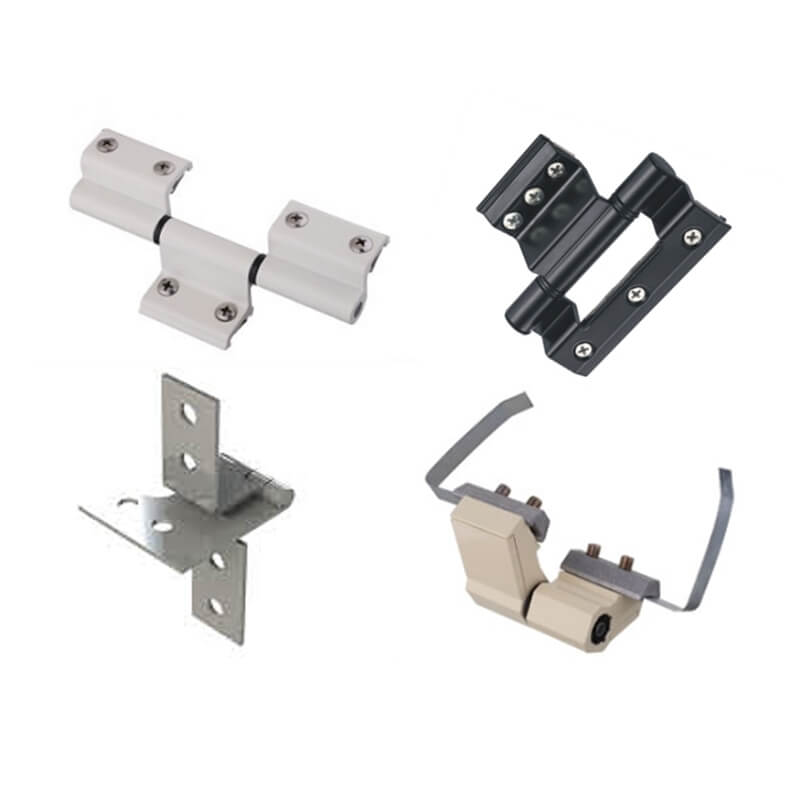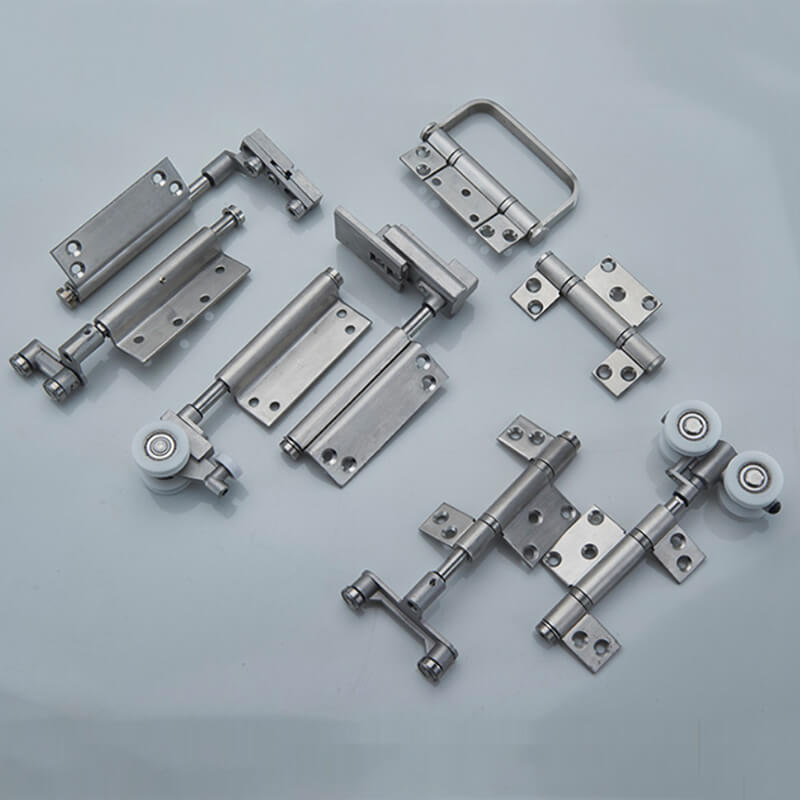



With the best raw materials, our products keep the longest durable years of using. Anti-corrosion, anti-shocking and safe. Endowing you with brand new enjoy. With complete specifications and varieties, the product is suitable for various kinds of doors and windows.
Send InquiryA hinge is a mechanical bearing that connects two solid objects, typically allowing only a limited angle of rotation between them. Two objects connected by an ideal hinge rotate relative to each other about a fixed axis of rotation: all other translations or rotations being prevented, and thus a hinge has one degree of freedom.
Hinges may be made of flexible material or of moving components. In biology, many joints function as hinges like the elbow joint.
Hinges, the often-under-appreciated member of the hardware department that holds your door in place, comes in a variety of sizes and styles.
Choosing the perfect hinges for your project depends on where you’ll install them and the finished look you are trying to achieve.
Butt Hinge
The most common type of hinge used on doors is the butt hinge. It’s so named because the two leaves are mortised into the door and frame, allowing the two to butt up to each other. There are three different types of butt hinges: plain, ball bearing, and spring-loaded.
Builders generally use plain butt hinges for lightweight interior doors. A pin, that may or may not be removable, joins the two leaves (or plates) at the hinge’s knuckles.
Ball Bearing Hinge
The ball bearing hinge has lubricated bearings between the hinge’s knuckles to reduce friction caused by heavy doors. These durable hinges are ideal for heavy entryway doors or those that sustain frequent use.
Spring-Loaded Butt Hinge
To assure a door closes behind you, use a spring-loaded butt hinge. Often used on screen doors, you can calibrate these hinges to open or close with varying degrees of tension.
Rising Butt Hinge
A rising butt hinge raises the door ½-inch to clear a thick-pile carpet or threshold. When closed, it looks like a regular hinge.
Barrel Hinge
For specialty woodworking projects, like a box or small cabinet, use the barrel hinge. This small hinge is ideal for projects where you want the hinge concealed from view. To install, simply drill holes the right size to accommodate the barrels and insert the hinge. Typically made of brass, barrel hinges are not designed for load-bearing applications.
Concealed Hinge
Designed to be unseen, concealed hinges don’t detract from the beauty of fine furniture or cabinetry. They can be self-closing and, with the aid of a couple of screws, adjusted. You can also find larger concealed hinges for doors. Since they aren’t exposed, and are therefore tamper-proof, they provide security that regular hinges don’t.
Knife (Pivot) Hinge
You’ll find knife hinges in cabinets. Also called pivot hinges, they resemble the blades of a pair of scissors, attached at a pivot point. You mortise one hinge leaf into the end of the cabinet door and the other into the cabinet. Once installed, all that’s exposed is the pivot.
Another type of pivot hinge allows doors to pivot open and closed both ways, much like the kitchen doors you see in restaurants. These spring-loaded hinges are larger and heavier than those made for cabinetry.
Overlay Hinge
Some hinges add thickness to the cabinetry. To reduce that thickness, consider the overlay hinge. This type of hinge folds back on itself, allowing the door to lay flush against the face of the cabinet.
Offset Hinge
Ever try to move a couch through a doorway, only to find that the doorway is ½-inch too narrow? That’s where an offset hinge helps. This specialty hinge allows you to swing the door away from the doorframe, widening the opening up to two inches. Offset hinges are especially useful for areas you want to make ADA compliant.
Piano Hinge
This long, continuous hinge is aptly named for the hinge on a piano’s lid. A long rod runs through the knuckles of this hinge’s two long leaves, holding it together. It’s the perfect hinge choice for toy boxes, fold-down desks, and storage benches.
Strap Hinge
Outside, you’ll find strap hinges on gates. Inside, designers use smaller versions of them on cabinets to achieve a rustic feel. The long hinge leaves (or straps) add extra support for heavy gates or barn doors.
Hinges come in a variety of materials, including stainless steel, brass, bronze, pewter, and copper. You can also choose from different finishes like chrome, polished, or brushed to complement your design. And if your hinge is for outdoor use, choose one with a rust-resistant finish. Hinge installation may require the following tools: chisel, utility knife, hammer, screwdriver, and drill.
Tel: +86-10-58200688/58200388
Fax: +86-10-58202588
WhatsApp: +86-15101655345
E-mail: [email protected]
Contact: Sally Zhang
Address: Jinhai Wealth A, 21 Guangqu Rd., Chaoyang Dist., Beijing, 100022, China
Address: IMSENT Inc. Woodbine Ave, Suite 500, Markham, ON, L3R 6G2, Canada
Plant: No.5 Shagangzhong Road,Gangkou Town, Zhongshan, Guangdong, China
Plant: West of Zhangting Industrial District, Yuyao City, Zhejiang, China
